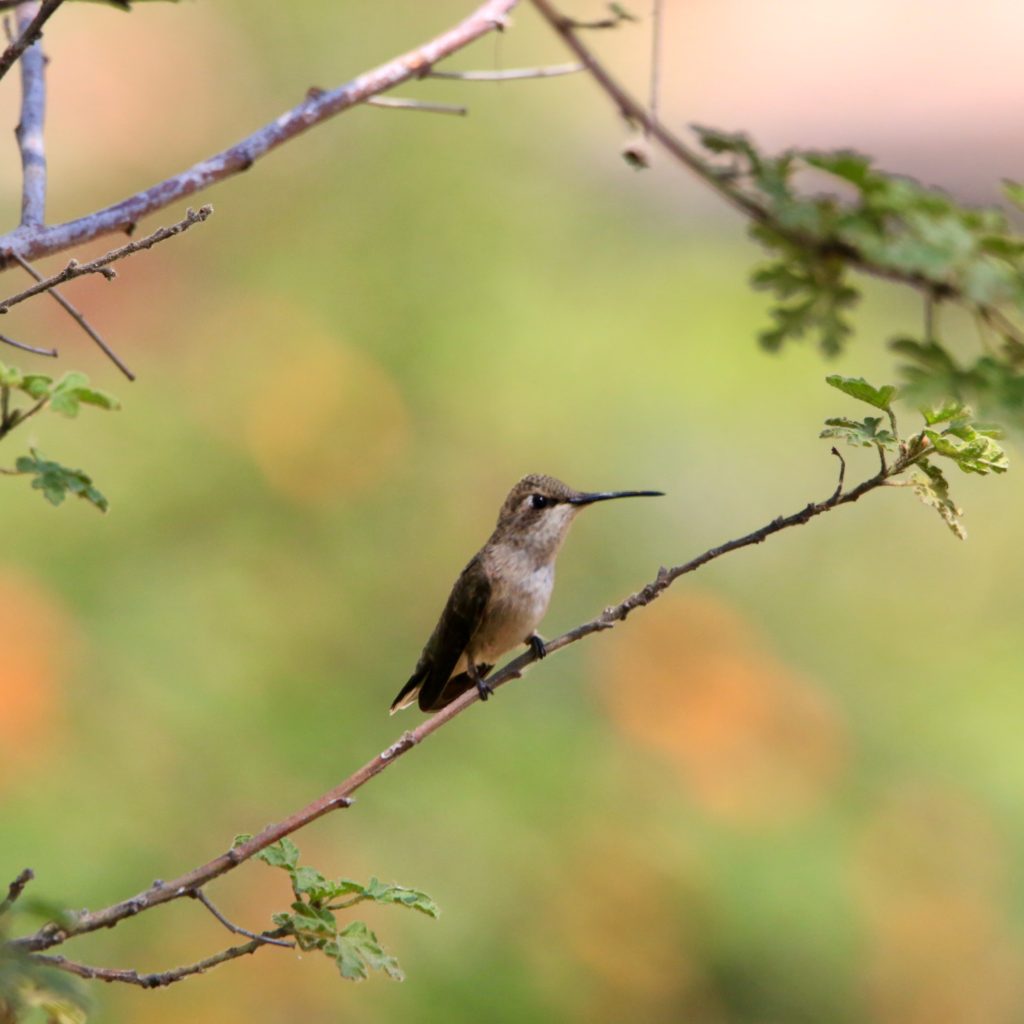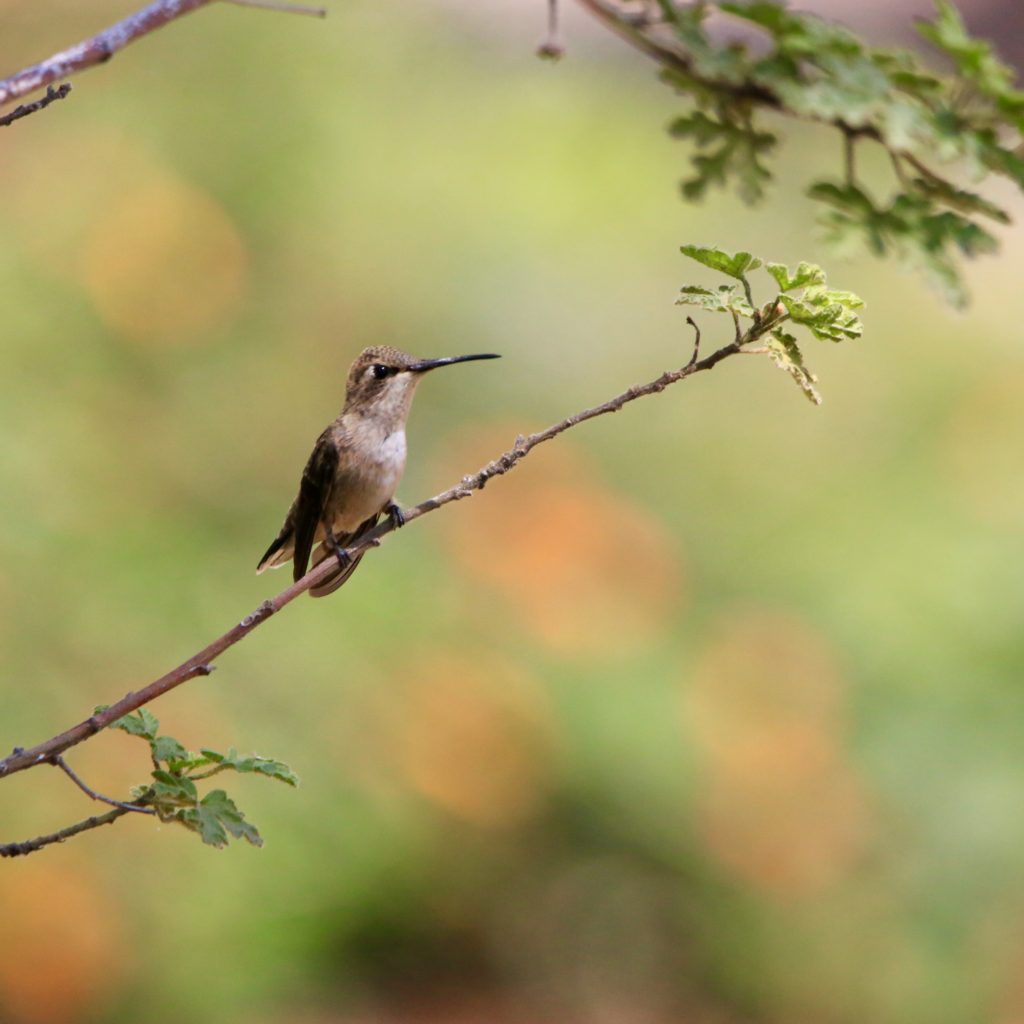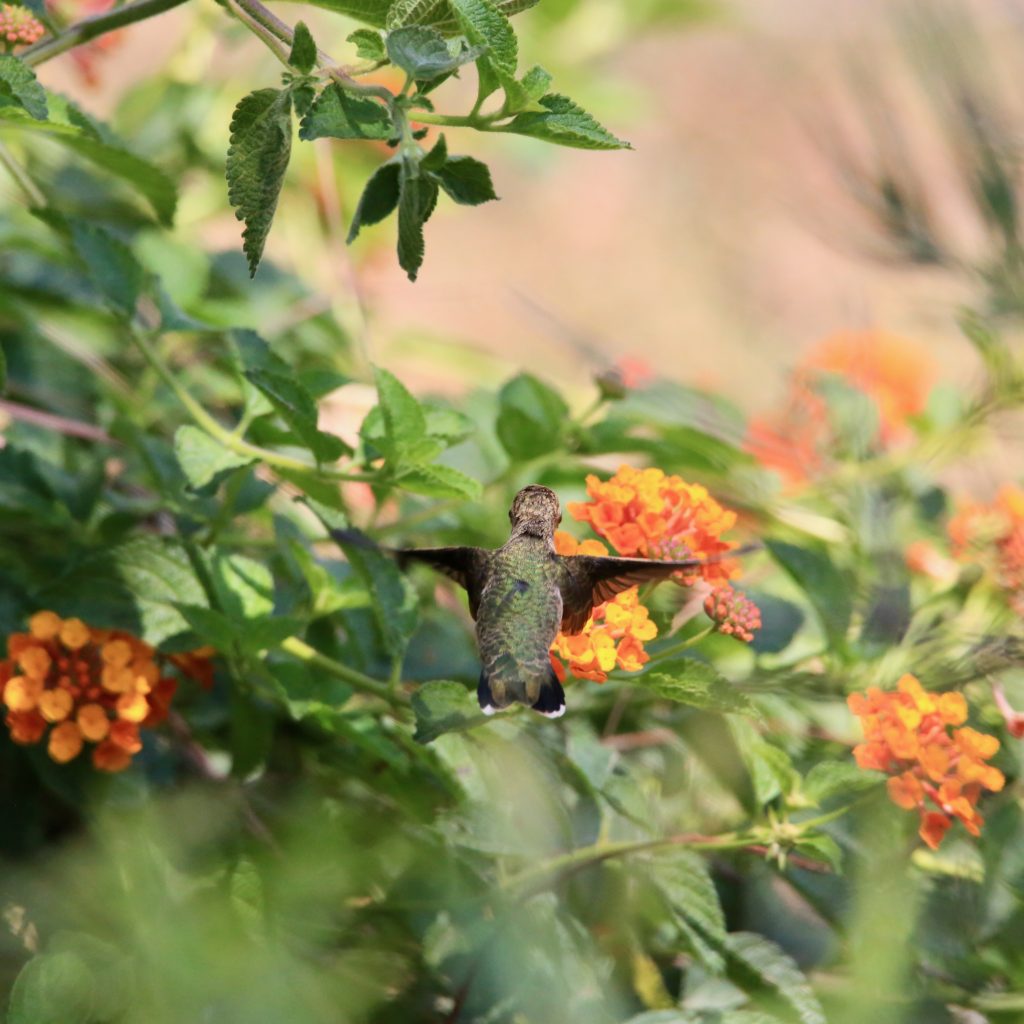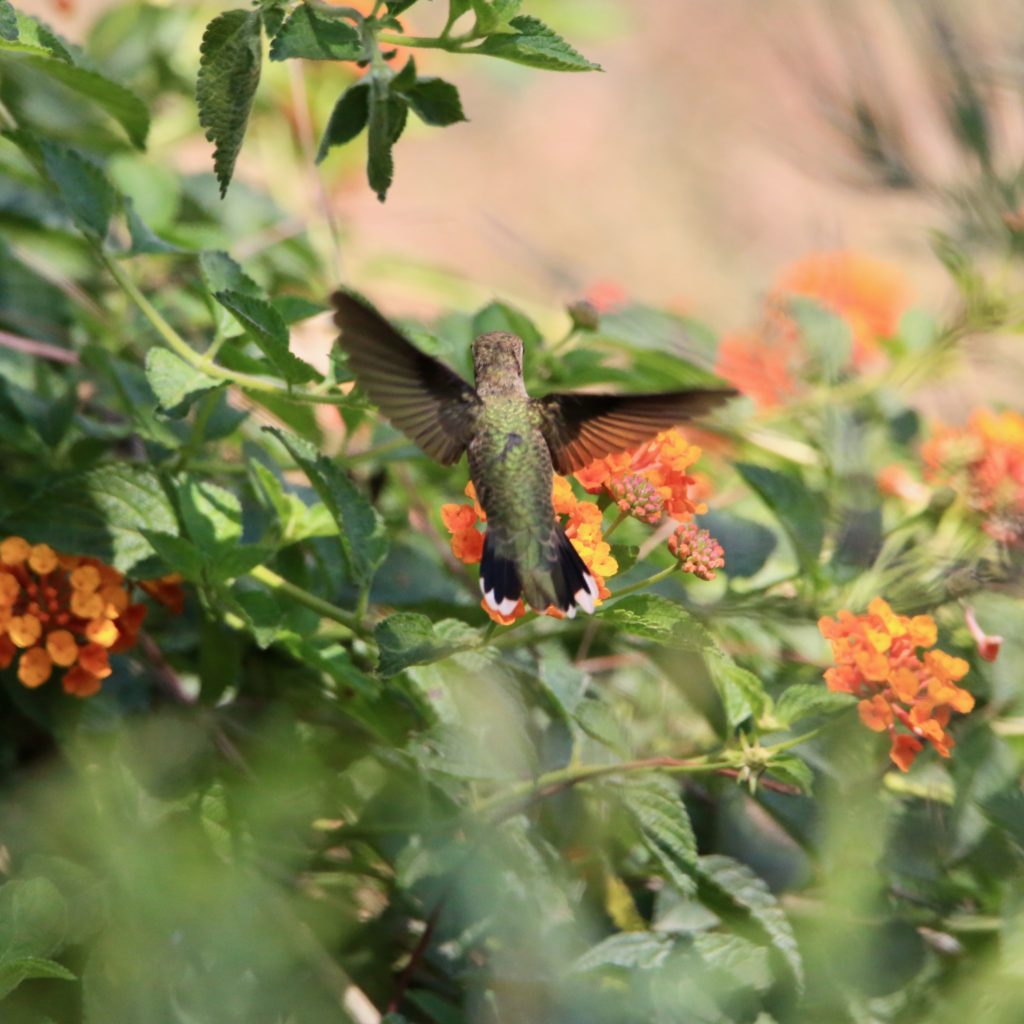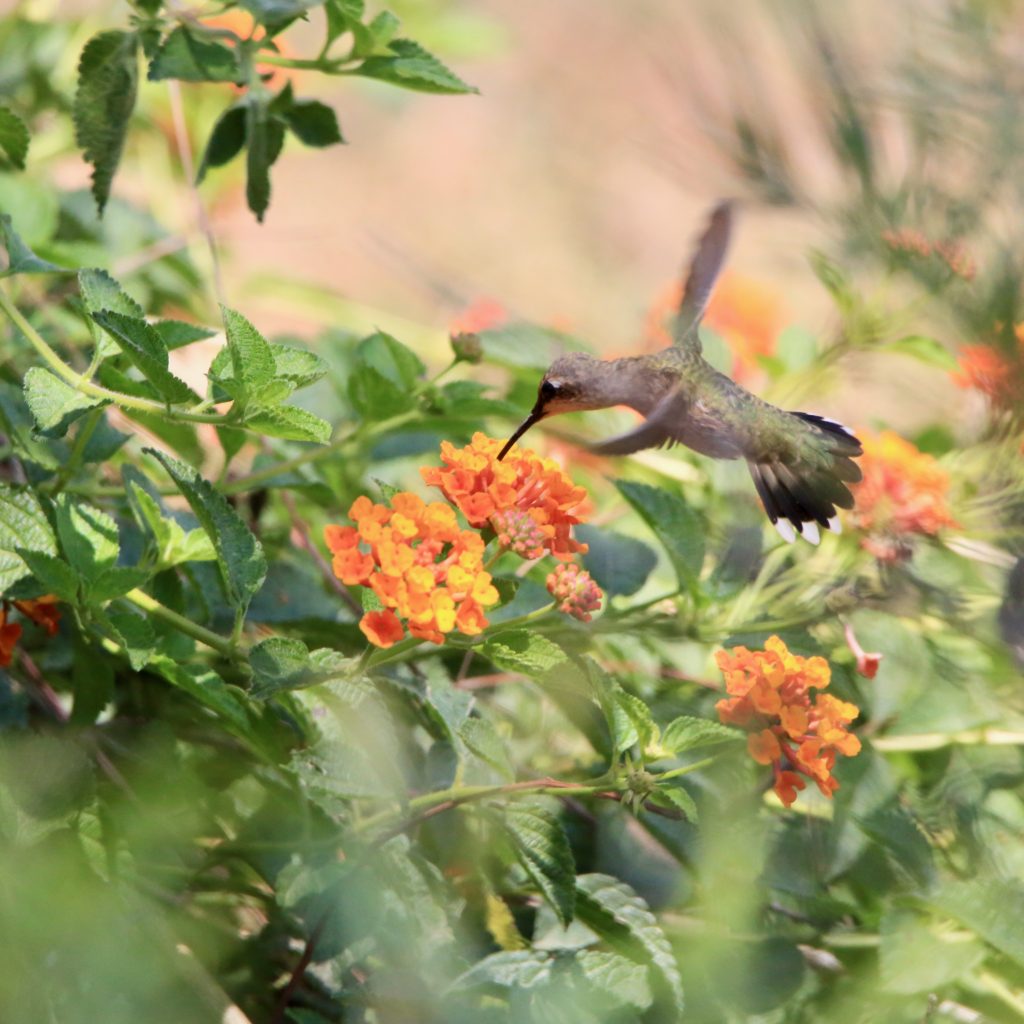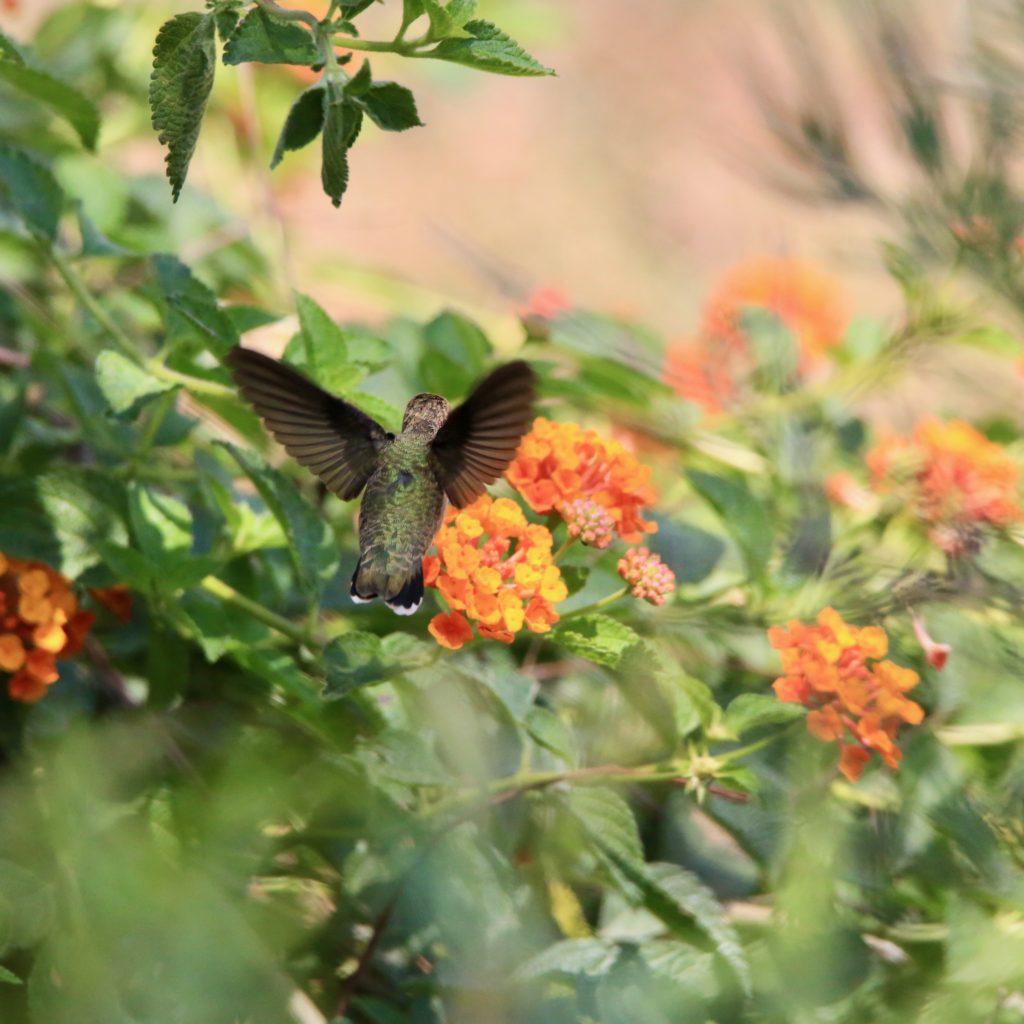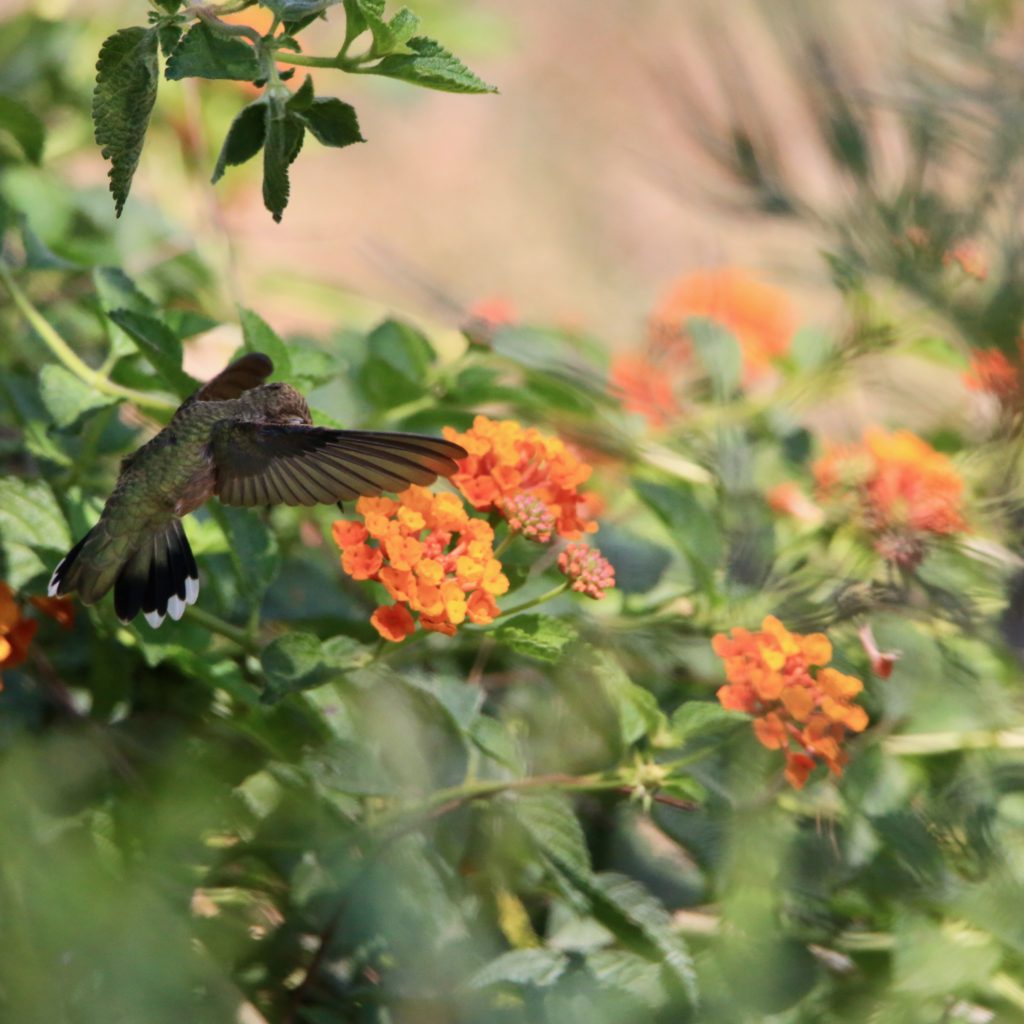
The Rufous Hummingbird
A Rufous Hummingbird is a fun bird to see while bird watching. Below are some tips to help you identify Rufous Hummingbirds. We have also put together a list of fun Rufous Hummingbird t-shirts, Rufous Hummingbird bird patches, birdhouses, bird feeders, binoculars, stickers, and other fun bird-watching items.
About Rufous Hummingbirds
The Rufous Hummingbird is a small hummingbird native to North America. Like any other bird in the same family, the Rufous Hummingbird is known for its extraordinary flight skills. During their migratory transits, they can fly 3,200km without stopping. The bird is common to the western regions of North America ranging from nesting grounds further north on the continent, southern Central Alaska down to New Mexico as a non-breeding ground. They are still common and widespread in North America through surveys show that there have been declines in the recent decades. This could be attributed to climate change.
Description and Identification
Rufous Hummingbirds are 3.1 inches long, with a wingspan of 4.3 inches. These birds weigh only
about 0.17 oz. Rufous Hummingbirds have gained their name due to the distinct rufous face,
flanks, and tails of the males. Males also have an orange-red gorget and white breasts. Some
Rufous Hummingbirds might have a slight hint of green on their backs or crowns. Female rufous
hummingbirds have metallic green backs and shimmery orange feathers in the middle of their
throat. These birds display sexual dimorphism as females are larger than males. As Rufous
hummingbirds closely resemble Allen’s hummingbirds, these two species of birds are extremely
difficult to differentiate on the basis of their appearance alone.
Rufous Hummingbird Color Pattern
Adult males have a rufous face and a white breast. Their throats have an iridescent orange-red patch that can be considered as the distinctive feature for the hummingbird species. They have some green on their back and crown but it’s not on all males. The female Rufous Hummingbird has white, green and some iridescent orange feathers on their gorget.
Rufous Hummingbird Size
The female bird is slightly larger than the male while the species is a particularly small kind. They have a body length ranging between 7-9cm and a wingspan of about 11cm. They weigh between 2-5g.
Rufous Hummingbird Behavior
They use the same mechanism as other hummingbirds to feed on nectar. They hover around flowers to use their long beaks to sip on nectar. The Rufous Hummingbird flies from one flower to another at dashing speed. The Rufous Hummingbird can also catch insects mid-air.
They are territorial birds and very aggressive to the extent that they could chase away larger birds from their territory.
Rufous Hummingbird Food
Nectar is the primary source of nutrition for Rufous Hummingbirds. These birds extract nectar from
colored flowers such as mints, lilies, fireweeds, horsemint, black locusts, currants, heats, scarlet
gilia, columbines, and penstemons. These birds also need to consume insects to fulfill their protein
requirements. Flies, aphids, gnats, and midges are insects commonly consumed by Rufous
Hummingbirds. Rufous Hummingbirds have also been observed to drink sap from holes drilled by
Red-naped sapsuckers. These birds prefer areas in which flowers are spaced well apart from each
other so they can freely fly and hover between them. Rufous Hummingbirds choose to have several
small meals throughout the day, instead of a couple of large meals.
They mostly feed on nectar and insects. They can also feed on sugar-water mixtures through hummingbird feeders when in suburban habitats.
Rufous Hummingbird Habitat
Rufous Hummingbirds generally prefer to breed in open areas such as yards, parks, and shrubby
areas. These birds can also inhabit thickets, meadows, and swamps. During breeding season
Rufous Hummingbirds reside in elevations up to 6,000 feet from the ground. In winters, these birds
are generally found at higher elevations that can range up to 12,600 feet. Wintering rufous
hummingbirds reside in pine woods, thorn forests, and shrubby areas.
The Rufous Hummingbird can be spotted in mountain meadows, streamsides, and forest edges.
Range and Migration
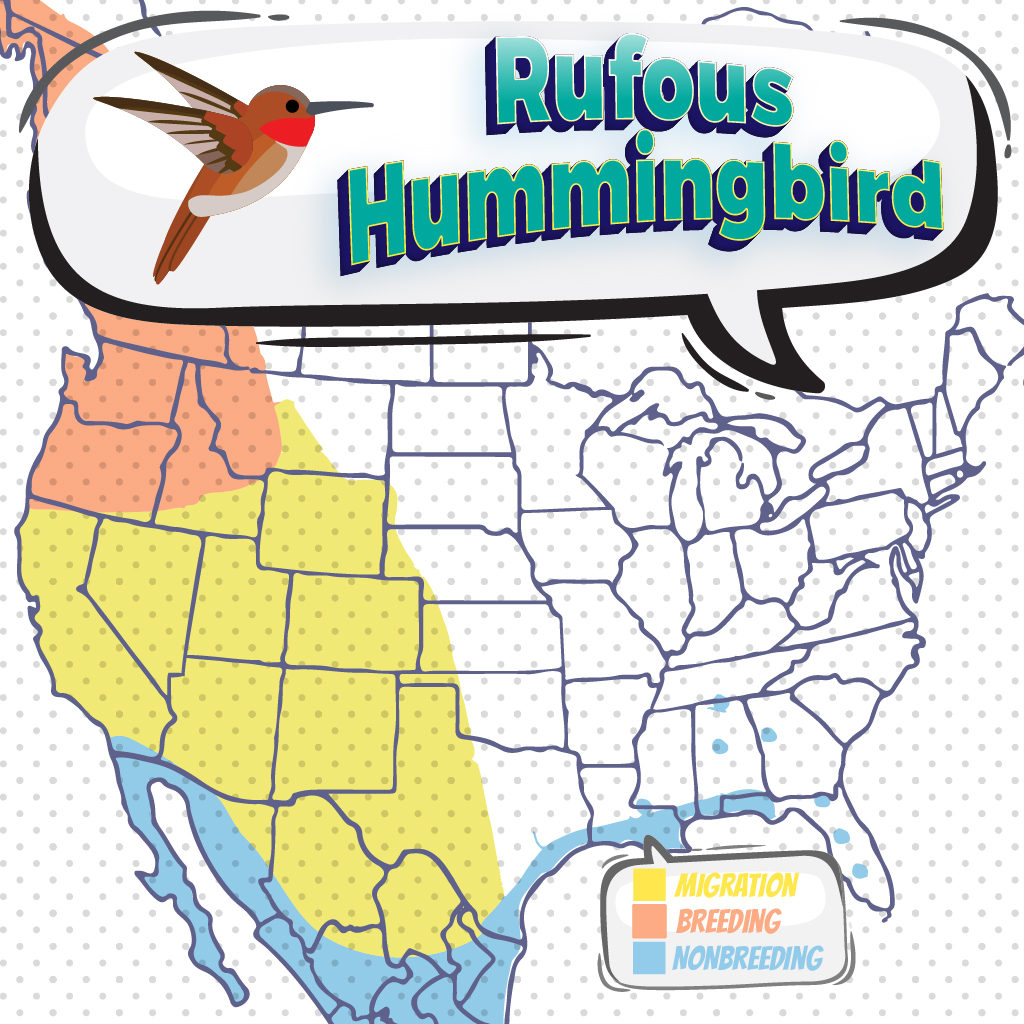
Rufous Hummingbirds are small hummingbirds that are predominantly found in western and
coastal North America during the breeding season. These magnificent birds are known for the long
distances they cover during migration. Rufous Hummingbirds can travel up to 2000 miles to reach
their wintering grounds in Mexico. During their journey to Mexico, they might make short stops in
nearby lowlands to gain the full benefit of the wildflower season. Males generally begin migrating
before females or juveniles so that they can establish their breeding territories.
Rufous Hummingbird Life Cycle
The female bird can clutch between 1-3 eggs but mostly two eggs. They incubate the eggs for 15-17 days. The young leave the nest 21 days after they hatched. The bird can live up to 8 years.
Rufous Hummingbird Nesting
Male Rufous Hummingbirds arrive about 2-3 weeks before females to their breeding territories.
Females are courted by the males, through acrobatic aerial displays. Males have been observed to
mate with several females during the breeding season. Female Rufous Hummingbirds show their whitetail tips to males to indicate that they are interested in mating. These birds copulate for a maximum
of 5 seconds. Female Rufous Hummingbirds construct nests in protected shrubbery such as
huckleberry bushes and blackberry vines. Females build their nests out of plant materials such as
lichens, mosses, and leaves. They weave these materials together with spider webs to form a
loose nest. On average, females lay about 2 eggs which need to be incubated for 12-14 days
before they hatch.
Ornithology
Bird Watching Academy & Camp Subscription Boxes
At Bird Watching Academy & Camp we help kids, youth, and adults get excited and involved in bird watching. We have several monthly subscription boxes that you can subscribe to. Our monthly subscription boxes help kids, youth, and adults learn about birds, bird watching, and bird conservation.
Bird Watching Binoculars for Identifying Rufous Hummingbirds
The most common types of bird-watching binoculars for viewing Rufous Hummingbirds are 8×21 binoculars and 10×42 binoculars. Bird Watching Academy & Camp sells really nice 8×21 binoculars and 10×42 binoculars. You can view and purchase them here.
Rufous Hummingbird T-shirts
If you love the Rufous Hummingbird you should purchase a Bird Watching Academy & Camp T-shirt. To help support bird conservation we donate 10 percent to bird conservation activities.
Rufous Hummingbird Iron On Patches
Kids, Youth, and Adults love to collect our Bird Watching Academy & Camp iron-on patches. Our bird-watching patches help you keep track of the birds you have seen and identified. You can also display the patches on our Bird Watching Academy & Camp banners.
The Rufous Hummingbird is a great iron-on patch to start your collection with. The patches are durable and can be sewn on or ironed on to just about anything.
Rufous Hummingbird Stickers
Stickers are a great way for you to display your love for bird watching and the Rufous Hummingbird. We sell a monthly subscription sticker pack. The sticker packs have 12 bird stickers. These sticker packs will help your kids learn new birds every month.
Bird Feeders for Rufous Hummingbirds
There are many types of bird feeders. Here are our favorite bird feeders for your backyard. We use all of these bird feeders currently. Kids will have a great time watching birds eat at these bird feeders. Using this collection of bird feeders will provide a wide variety and many types of birds.
Best Bird Houses for Rufous Hummingbirds
There are many types of birdhouses. Building a birdhouse is always fun but can be frustrating. These 4 birdhouses have become our favorites. Getting a birdhouse for kids to watch birds grow is always fun. We spent a little extra money on these birdhouses but they have been worth the higher price and look great.




